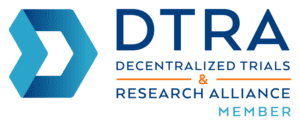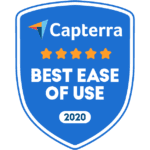
By: Rick E. Greenfield – CEO, RealTime Software Solutions, LLC
One of the greatest challenges facing clinical research sites around the globe is meeting recruitment goals for clinical trials. As protocol complexity has grown, so has the challenge of meeting recruitment goals on time. Depending on the study indication and protocol complexity, sites may have to phone-screen upwards of 100 potential subjects just to randomize a single study volunteer. With this reality, sites should leave no stone uncovered and continually find innovative ways to pull more potential subjects out of the community. One source of study subjects that is often underutilized, or in some cases completely overlooked, is the company website. Most of the site owners that I talk to don’t view their website as a great source of study volunteers, but the reality is that a good plan to leverage the company website for recruitment will lead to dozens of daily applications that will accelerate recruitment and build the site database faster than ever.
In this article I will provide a step-by-step guide to making your website one of your most powerful recruitment tools. There are a few pieces of the puzzle that will cost a few bucks, but these investments will pay huge dividends in the future.
Step One – Create a branding strategy: Decide who you are, what your message is, and what you look like. This is the first part of branding. You need a unique company name, a professional logo and a catchy slogan such as, “Leading the Search for Better Health”. A good website domain name that is easy to remember and not too long is good to have as well.
Step Two – Build a great website: The great thing about a website is that every website is different and is the perfect tool to express what makes your research site great. Your website can educate the community about research, explain why participating in a study at your site might be a great experience, and showcase currently enrolling studies at your site. Using your unique logo and slogan, build a nice website that caters to the local community. Instead of pictures of syringes and test tubes, use “people” pictures depicting a cross-section of the community enjoying life and smiling about their health. A few doctors and nurses are OK, but you want pictures that local residents can identify with that make them feel excited to know more about your services. Your website should have at least have the following elements:
- A simple non-cluttered homepage
- A clear and very conspicuous link or button to access a list of enrolling studies.
- A study listing page that showcases each study with a brief description of the study and a link to “See Study Details”.
- A study-specific details page for each study that preferably displays a colorful IRB-approved flyer and more information about the study.
- A form application whereby volunteers can submit their contact information to be considered for participation. This information should be limited to only first name, last name, phone #, and email address. Asking for detailed information such as medical history, or too much contact information, will lead to fewer applications.
- A great “Contact Us” page that provides clear contact information, phone #, and your address (with online map embedded).
- A page dedicated to study participation that includes reasons to participate, benefits and any site-specific processes that enhance the research participant’s experience. You may want to consider adding information from CISCRP showcasing the altruistic value of participating.
- Make sure that the website is mobile-friendly! This is one of the most important features. Your website should auto-scale to whatever device it is being viewed on. More than 65% of all web traffic is now over mobile devices such as tablets and phones, so be sure that mobile visitors have a great experience as well.
Step Three – Brand your website and direct traffic to it: All of your study flyers, company brochures, business cards… EVERYTHING should have your logo and website address very clear. With all of the money that you spend to promote your studies using sponsor-approved ad dollars, you should be building a brand in your community. Many sites have their own annual branding budget to further market their site and primary study indications.
Step Four – Use online media to promote your studies: Use promoted Facebook Ads, Google AdWords, Craigslist and other online mediums to advertise your studies online. Ads should link directly to the study-specific pages on your website and provide a “sign-up” form to apply for the study. Knowing how to effectively utilize these marketing platforms requires experience and training, so you can either take the challenge on yourself, hire a marketing/recruitment specialist, or outsource these services through an ad agency. The goal is to use the powerful tools within these marketing platforms to specifically target subsets of your local community and market your studies to them. If you are successful, interested volunteers will click on your online ads and be re-directed to your website’s study-specific landing page. One more click, and these interested parties can apply for your study.
Step Five – Follow-up quickly: Studies have shown that interest levels of applicants drop very quickly. If your staff waits more than 24 hours to respond to an online application, the chances of capturing the interest of the applicant has already dropped significantly. The inbox where applications are delivered should be closely monitored and applicants should be followed up with very quickly.
In Summation: Build and brand an awesome website, target local residents with online marketing mediums, land interested volunteers on a study-specific page, make it easy for them to apply, follow-up quickly.
Another great way to stay engaged with your database of subjects and keep them re-applying to new studies is to stay connected with them through email marketing campaigns that utilize platforms like MailChimp or Contactology. Monthly engagement emails listing enrolling studies and upcoming studies with links to the various study-specific pages on your website will bring in fresh applications every time.
Sites around the country who are using their website and online marketing effectively are seeing far better results in many cases than traditional advertising methods such as TV, radio and print. If you are not re-positioning your advertising to online mediums and leveraging your company website, then you are missing out on a huge opportunity. Effective web-based marketing and advertising is a critical part of any good marketing strategy. Clinical research is no exception.






